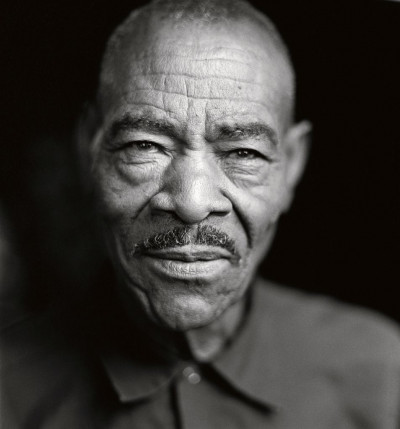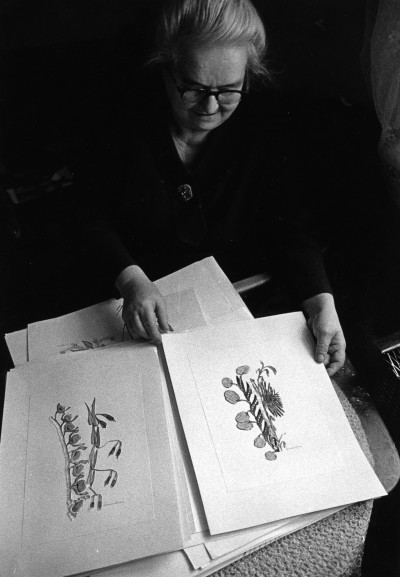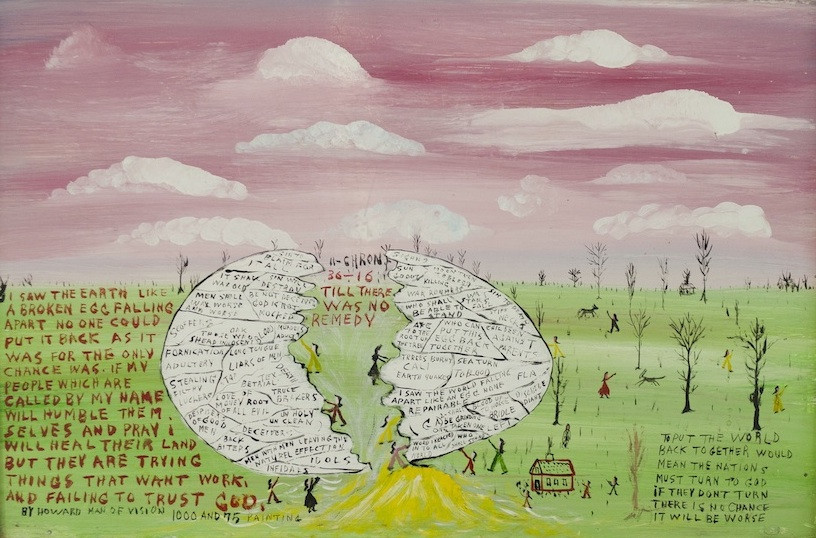I Saw the Earth Like a Broken Egg
I Saw the Earth Like a Broken Egg borrows its title from a painting by Howard Finster, in which the artist envisions the world shattered and irreparable, cracked by the folly of modern man, “trying things that won’t work.” Curated by Sam Parker, the exhibition examines the increasingly nuanced relationship between artists and the natural world.
Sam Parker has selected works by artists who reimagine natural imagery in unexpected ways. Working in a wide variety of media, these artists incorporate organic elements into compositions that are playful, provocative, and enigmatic.
Fred Reichman drew much of the subject matter in his paintings from the intimate, insular world around him: wife, children, dog, cat, and the happenstance arrangement of humble possessions. Cat with Garden Hose depicts a subtly rendered feline silhouette surrounded by the free-form line of a bright blue garden hose. A champion of figurative art, Reichman remained loyal to the traditions of landscape and still life painting, while still creating innovative work that employs an irreverent perspective.
The satirical drawings of Philip Garner reflect a desire to tailor nature to human needs. He contrasts our commodity-obsessed society with the poetry of nature, and the results are delightfully absurd. In TV Palm, Garner envisions a commercial application for palm trees, while in Unitrans Global Multiway, he imagines a world united in perfect harmony via two massive monorail systems.
The ethereal sunflower people in the work of Charles Steffen represent a more direct relationship between humankind and the natural world. His figures, beings that are simultaneously both man and plant, perhaps allude to the uncertain future of flora on Earth: in order to survive, both must merge.
Justin Hodges’s sculpture Resting Bird features an artificial banana palm cradling a small monitor, which plays a manipulated video of a nesting bird. His work questions the human inclination to mimic nature while simultaneously obfuscating our own integration into natural systems.
Blue Stones, a small work on paper by the French-Mexican Surrealist Alice Rahon, depicts stones that have been filled in with abstracted line work that falls somewhere between automatism and hieroglyphs. Ellie Hunter’s Like Saying a Pond is My Brain inverts Rahon’s relationship of the container and the contained; where Rahon uses the silhouettes of stones to contain her drawings, Hunter uses fine netting to contain a collection of stones carefully selected from beaches in California. The gauzy netting veils these stones, and suspends them in airy arrangements.
Each artist in I Saw the Earth Like a Broken Egg holds a unique position in the wider art community. The exhibition includes work by those who have never before exhibited in a commercial context, as well as those included in prominent museum collections. In keeping with the gallery’s dedication to art brut, the exhibition features “persons unscathed by artistic culture,” as well as artists who are very much “on the scene.”
The exhibition includes work by Georgia Blizzard, Thornton Dial, Howard Finster, Philip Garner, Graham Hamilton, Drew Heitzler, Justin Hodges, Ellie Hunter, Alice Rahon, Fred Reichman, Emily Ludwig Shaffer, Charles Steffen, Walker Tate, and Anna Zemankova.


